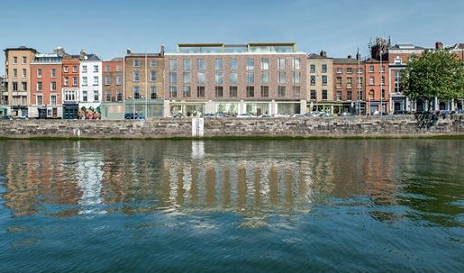Government plans to claim £4bn from property developers to fix cladding issues are ‘light on detail’ and ‘important questions remain unanswered’, says Peter McHugh.
Peter, a partner at national law firm Clarke Willmott LLP, says with the threat of legal action hanging over developers the government should be providing clarity as a matter of urgency.
Earlier this month, housing secretary Michael Gove, announced developers would have to contribute around £4bn to replace dangerous combustible cladding on mid-rise buildings (those between 11 and 18m in height). In addition, the government plans to introduce legislation that would retrospectively extend the legal right of building owners and leaseholders to demand compensation from their building’s developer for safety defects up to 30 years old.
At a summit with Gove on 20 January, senior executives from 20 building firms said the government and companies that sold combustible materials must shoulder some of the blame.
“If developers fail to contribute, the government has said it will “take all steps necessary” to deliver the remediation work,” said Peter, who specialises in construction, property and engineering law. “This could include restricting access to government funding and future procurements, pursuing companies through the courts, and the imposition of a solution in law.
“However, the government notice is light on detail and important questions remain unanswered.” These include:
· When will developers discover they are within the scope of companies expected to contribute?
· What level of financial contribution does the government expect from developers?
· Will remediation work, already undertaken by developers, result in a reduction to an expected contribution?
· Will the government demand similar contributions from the manufacturers of defective cladding products?
· Will the government seek further contributions to cover wider not-cladding safety issues such as flammable balconies, that campaigners have asked for?
· Will buildings under 11m in height be included in the future?
· Will the funding be distributed via the existing Building Safety Fund, or will a new fund and application process be set up?
“It is not clear when, or if, these questions will be answered, especially if the government expects a “clear, fully funded plan of action” by March 2022.” Meanwhile, Peter says the occupiers of mid-rise properties with cladding issues are also living with the uncertainty.
“Despite pressure on the government to ban the use of combustible materials in mid-rise buildings the use of such materials remains allowable under the current regulations,” he added. This has led to bizarre situations where new-build mid-rises are being built using combustible materials, but existing mid-rises are seeking removal of their cladding systems after External Wall Fire Review (EWS1) surveys have highlighted dangers posed by the materials and construction.”
Michael Gove’s Government Approach to Building Safety letter on January 10, stated he was putting developers on notice over cladding issues and pledged that leaseholders living in developments above 11 metres would no longer have to pay to fix safety problems.












